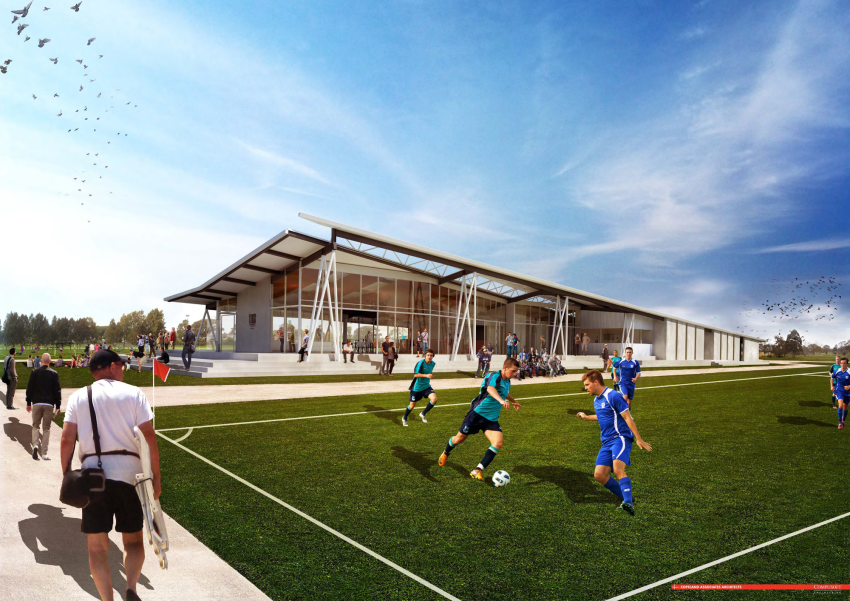How soccer builds community is evident in its ability to bring diverse individuals together through a shared love for the game. This global phenomenon is more than just a sport; it serves as a powerful community-building tool that transcends language and cultural barriers. Local soccer initiatives play a significant role in forging connections among residents, allowing friendships to blossom both on and off the field. The inspiring stories of youth soccer impact across various regions showcase the potential for collaboration and support among players, families, and fans alike. Through these shared experiences, soccer not only creates memories but also strengthens the fabric of communities, encouraging a spirit of togetherness and mutual respect.
The essence of soccer as a unifier revolves around its ability to foster a sense of belonging and collective identity within groups. By harnessing the camaraderie found in recreational activities, communities come together to support local soccer teams and leagues, creating bonds that extend beyond mere competition. Various soccer stories illustrate how this sport cultivates relationships, enhances local pride, and promotes youth engagement, ultimately enriching community life. Whether through organized events or grassroots initiatives, the dynamics of soccer cultivate a vibrant atmosphere where teamwork and collaboration flourish. Thus, this beloved sport continues to play a crucial role in shaping inclusive communities that resonate with the spirit of connectivity.
How Soccer Builds Community: The Personal Touch of Local Initiatives
Local soccer teams play a pivotal role in shaping communities by fostering personal connections and encouraging community spirit. These teams often go beyond mere competition; they engage in volunteer activities that improve local lives. An illustrative example is the Hendersonville girls’ soccer team, which roots its identity in service. By getting involved in local school programs and community drives, they not only strengthen team bonds but also create a network of support that transcends the soccer field. Through these initiatives, young players learn the significance of collaboration, empathy, and responsibility, weaving a fabric of community cohesion.
Moreover, local soccer initiatives serve as a platform for storytelling and shared experiences. Each event, every game, creates memories that bind players and families together. It is these personal interactions that foster a sense of belonging, making each participant feel valued in their local society. As players collaborate on initiatives that benefit their communities, they build lifelong friendships and instill a genuine sense of pride in their surroundings. This personal touch amplifies the impact of soccer as a communal activity that nurtures growth and unity.
Youth Soccer: Catalyzing Growth and Family Engagement in Communities
Youth soccer programs are a breeding ground for not just developing athletes but also nurturing strong family dynamics. In cities like Chicago, these leagues provide opportunities for families to bond over shared interests, with parents frequently attending matches and engaging with one another. The effort parents put into supporting their child’s progression in the sport fosters friendships and networks among families, transforming soccer fields into community gathering spaces. This interaction promotes a healthy exchange of ideas and experiences, thereby enriching the community fabric.
In addition to fostering family connections, participation in youth soccer equips children with invaluable life skills. Through competition and teamwork, young athletes learn resilience, discipline, and leadership. Each match becomes a learning opportunity, teaching not only the importance of working as a cohesive unit but also how to navigate the challenges that arise both on and off the field. As children develop these skills, they contribute positively to their communities, exemplifying how youth soccer serves a dual purpose: cultivating athletic talent while simultaneously shaping responsible, engaged citizens.
Frequently Asked Questions
How does soccer promote community engagement through local initiatives?
Soccer fosters community engagement by encouraging local initiatives that connect players with their neighborhoods. For instance, youth soccer teams often participate in community service, promoting bonding among teammates and offering support to local causes. These connections reinforce social ties and help create a network of support that enhances both individual and community well-being.
What role do professional soccer teams play in building community pride?
Professional soccer teams serve as a catalyst for community pride and cohesion. By uniting fans from diverse backgrounds around a shared passion for their team, they foster camaraderie and create a sense of belonging. Events and matches provide opportunities for community members to come together, reinforcing local identity and loyalty, thus highlighting soccer’s ability to strengthen community bonds.
| Key Points | Details |
|---|---|
| Soccer as Community Connector | Soccer transcends borders and cultures, fostering friendships and strengthening local ties. |
| Local Initiatives | Local soccer teams engage in community service, promoting teamwork and personal growth. |
| Infrastructure Development | Projects like Mucho Soccer enhance community collaboration, ownership, and pride. |
| Youth Competitions | Youth leagues strengthen family bonds and develop essential life skills in young athletes. |
| Professional Teams | Professional soccer teams foster regional pride and bring diverse communities together. |
| Global Events | Events like FIFA Club World Cup promote funding for local soccer initiatives, benefiting communities globally. |
Summary
How soccer builds community is evident in the myriad ways it connects individuals and strengthens bonds across cultures and locations. From local initiatives that foster teamwork and camaraderie to professional teams sparking regional pride, soccer serves as a powerful mechanism for community engagement. Grassroots initiatives engage families and promote social responsibility, while global events leave lasting legacies that enrich local infrastructures. Each of these facets highlights soccer’s remarkable ability to unite people, encourage participation, and inspire shared identities. As communities rally around their teams and support one another, the beautiful game evolves into a celebration of collaboration, hope, and enduring friendships.
